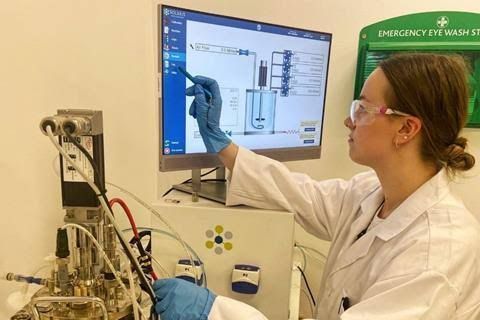
Leaching Microorganisms and Their Properties
Leaching microorganisms are specialized bacteria and archaea that facilitate the extraction of metals from ores through biochemical processes. These microorganisms are primarily involved in bioleaching, a process where they oxidize metal sulfides to release metals into solution. The most commonly used leaching microorganisms include:
- Acidithiobacillus ferrooxidans: This bacterium is known for its ability to oxidize ferrous iron (Fe²⁺) to ferric iron (Fe³⁺), which can then react with metal sulfides.
- Leptospirillum ferrooxidans: Similar to Acidithiobacillus, this organism also oxidizes iron but thrives in more extreme acidic conditions.
- Thiobacillus thiooxidans: This bacterium oxidizes sulfur compounds, contributing to the acidification of the environment and enhancing metal solubility.
- Ferroplasma spp.: These archaea are extremophiles that can survive in highly acidic environments and contribute to metal leaching.
These microorganisms possess properties such as acid tolerance, the ability to thrive in low-nutrient environments, and metabolic pathways that allow them to utilize inorganic compounds as energy sources.
Practical Applications of Bacterial Leaching
Bacterial leaching has several practical applications, particularly in the mining industry:
- Copper Extraction: Bioleaching is widely used for copper recovery from low-grade ores, tailings, and waste materials.
- Gold Recovery: Certain bacteria can be employed to extract gold from refractory ores that are not amenable to traditional cyanidation methods.
- Environmental Remediation: Microbial leaching can be used to recover metals from contaminated sites or mine tailings, reducing environmental impact.
- Sustainable Mining Practices: Utilizing bacteria for metal extraction reduces the need for harsh chemicals and minimizes energy consumption compared to conventional methods.
Biochemical and Chemical Reactions in Leaching
The leaching process involves several biochemical and chemical reactions:
- Oxidation-Reduction Reactions: Microorganisms oxidize ferrous ions (Fe²⁺) into ferric ions (Fe³⁺), which then react with metal sulfides (e.g., chalcopyrite) to form soluble metal complexes:
- Fe2+ + O2 + 2H+ → Fe3+ + H2O
- CuFeS2 + 4Fe3+ + 8H2O → 5Cu2+ + 9H+ + 4Fe2+ + 2SO42−
- Acid Production: The oxidation of sulfur compounds by certain bacteria leads to the production of sulfuric acid (H₂SO₄), which further aids in dissolving metals:
- S + O2 + H2O → H2SO4
- Metal Solubilization: The resulting ferric ions can dissolve various metal sulfides, leading to increased concentrations of soluble metals like copper.
Extraction of Copper by Microbial Leaching
The extraction of copper via microbial leaching typically follows these steps:
- Preparation of Ore: Low-grade copper ore is crushed and stacked in heaps or placed in bioreactors.
- Inoculation with Microorganisms: Specific bacterial strains such as Acidithiobacillus ferrooxidans are introduced into the heap or reactor.
- Leaching Process:
- The bacteria oxidize Fe²⁺ ions into Fe³⁺ ions, which react with copper sulfide minerals.
- As a result, copper ions are released into solution.
- Recovery of Copper Ions: The copper-rich solution is collected and processed through solvent extraction or electrowinning techniques to recover metallic copper.
- Post-Leaching Treatment: The remaining material may undergo further treatment for additional recovery or environmental remediation.
This method is advantageous due to its lower environmental impact compared to traditional smelting processes and its ability to extract metals from low-grade ores that would otherwise be uneconomical.







